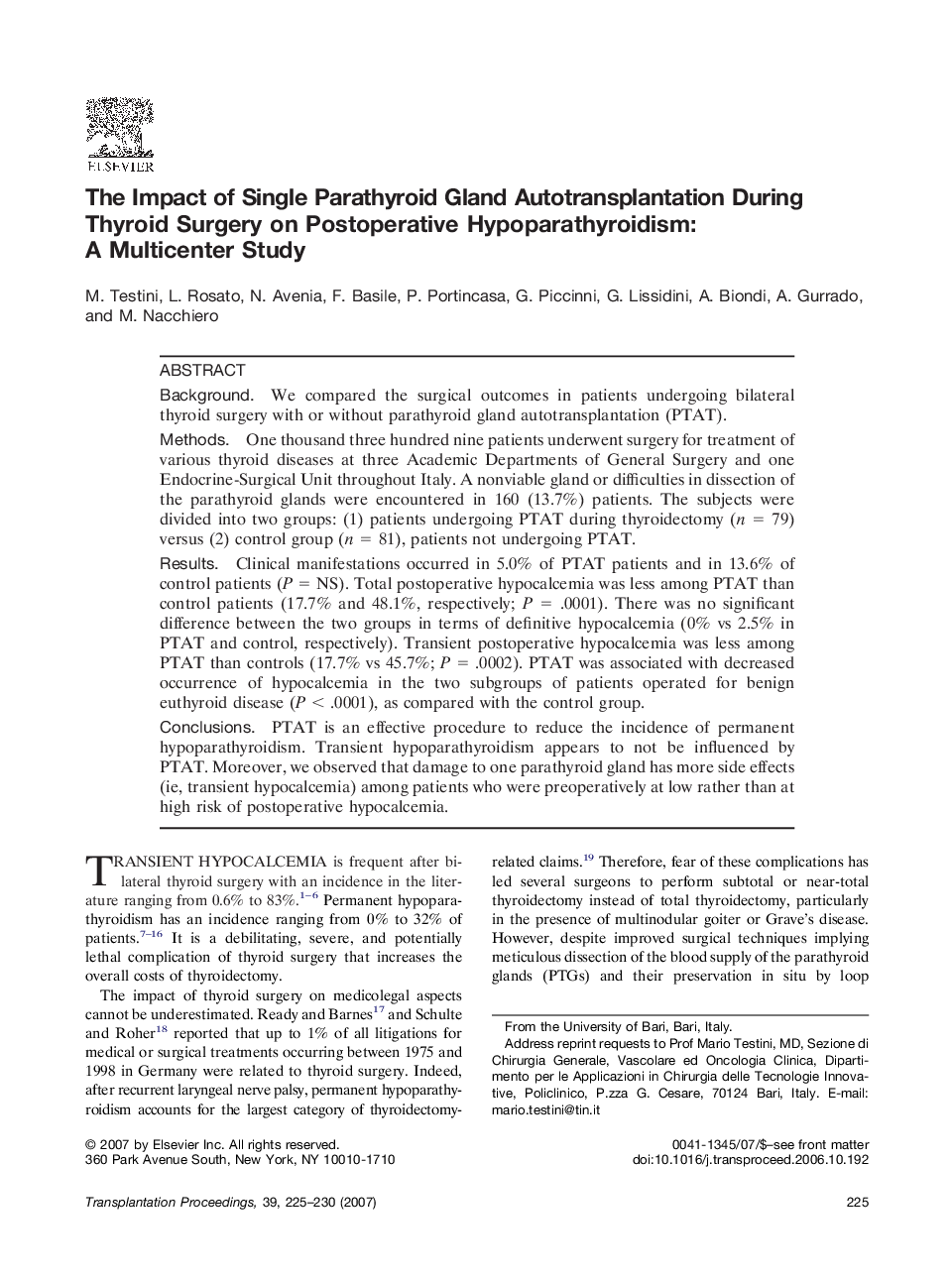| Article ID | Journal | Published Year | Pages | File Type |
|---|---|---|---|---|
| 4262947 | Transplantation Proceedings | 2007 | 6 Pages |
BackgroundWe compared the surgical outcomes in patients undergoing bilateral thyroid surgery with or without parathyroid gland autotransplantation (PTAT).MethodsOne thousand three hundred nine patients underwent surgery for treatment of various thyroid diseases at three Academic Departments of General Surgery and one Endocrine-Surgical Unit throughout Italy. A nonviable gland or difficulties in dissection of the parathyroid glands were encountered in 160 (13.7%) patients. The subjects were divided into two groups: (1) patients undergoing PTAT during thyroidectomy (n = 79) versus (2) control group (n = 81), patients not undergoing PTAT.ResultsClinical manifestations occurred in 5.0% of PTAT patients and in 13.6% of control patients (P = NS). Total postoperative hypocalcemia was less among PTAT than control patients (17.7% and 48.1%, respectively; P = .0001). There was no significant difference between the two groups in terms of definitive hypocalcemia (0% vs 2.5% in PTAT and control, respectively). Transient postoperative hypocalcemia was less among PTAT than controls (17.7% vs 45.7%; P = .0002). PTAT was associated with decreased occurrence of hypocalcemia in the two subgroups of patients operated for benign euthyroid disease (P < .0001), as compared with the control group.ConclusionsPTAT is an effective procedure to reduce the incidence of permanent hypoparathyroidism. Transient hypoparathyroidism appears to not be influenced by PTAT. Moreover, we observed that damage to one parathyroid gland has more side effects (ie, transient hypocalcemia) among patients who were preoperatively at low rather than at high risk of postoperative hypocalcemia.
